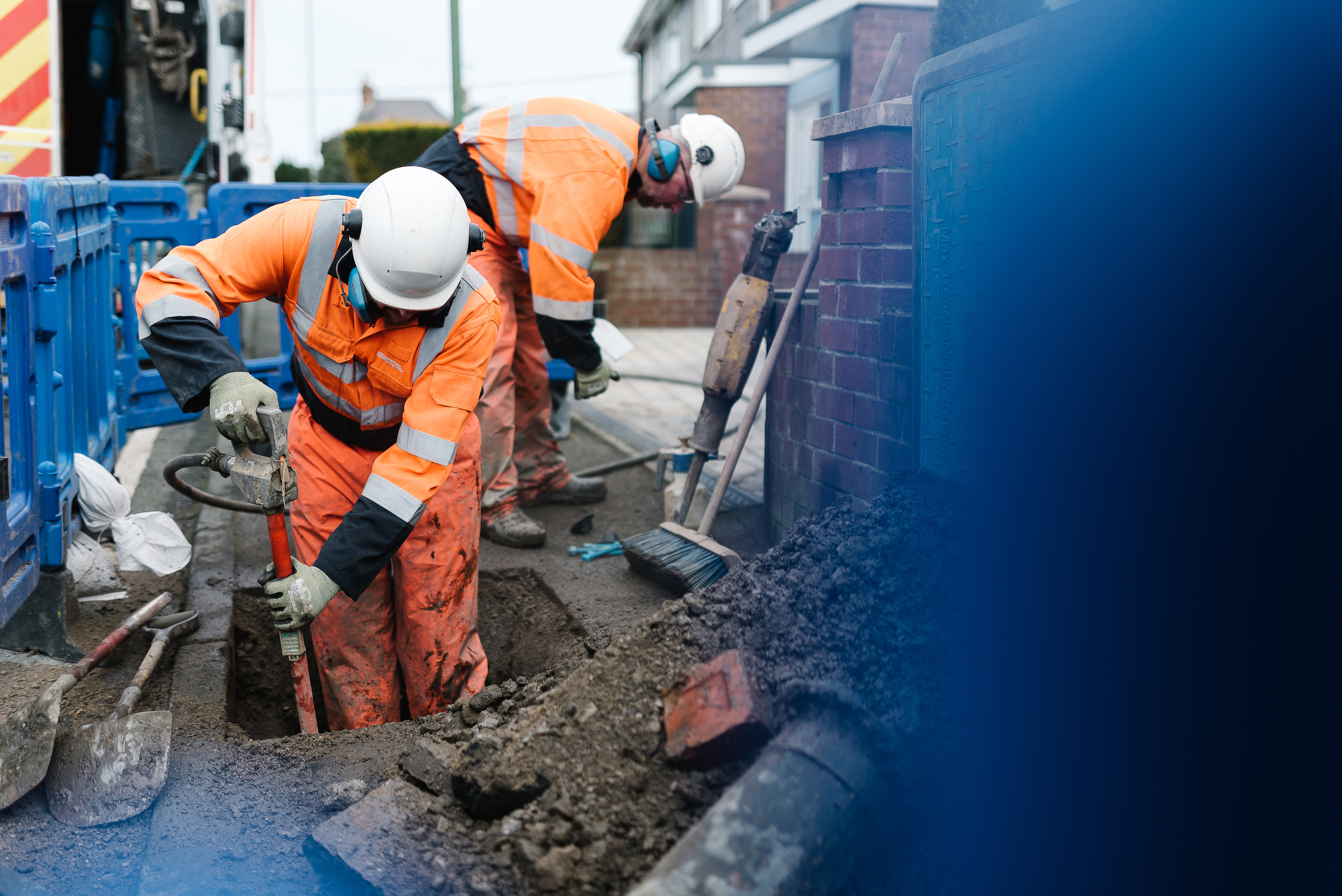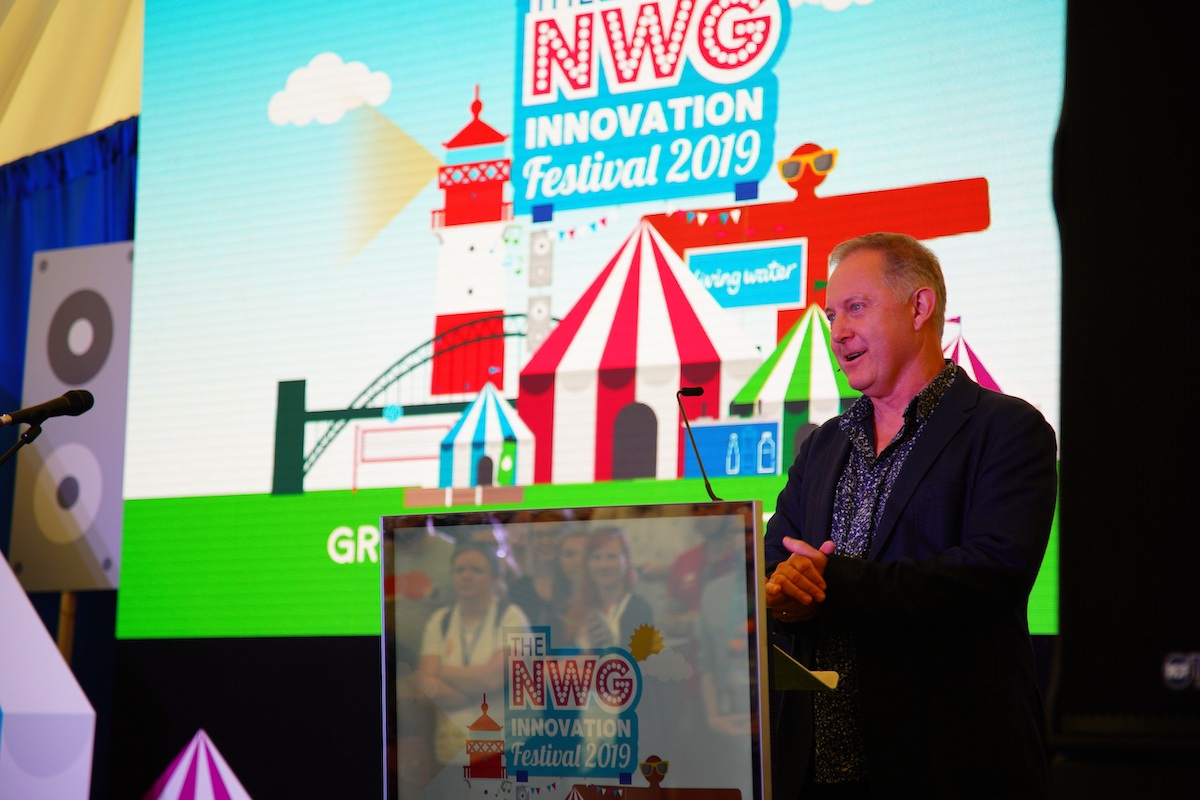
At Northumbrian Water Group innovation is part of our DNA. We seek out new thinking and greater collaborations to tackle both our own and society’s wider challenges. A key example of this is our work alongside the Geospatial Commission on the National Underground Asset Register (NUAR), which builds on a concept we first developed with Ordnance Survey at our own Innovation Festival back in 2018. As our latest Innovation Festival launches this week, I am delighted to be able to outline our own journey, the key role of the Geospatial Commission and the business need that this project so eloquently tackles.
A game-changing ambition
When the Geospatial Commission and the Cabinet Office announced the NUAR project in April 2019, with pilots in North East England and London, it represented a game-changing ambition across the public and private sector. To create a single, digital underground map of assets across utilities offers a whole range of benefits for businesses, customers, local government and the environment – an opportunity that should not be underestimated. The digging up of roads and infrastructure, accidental strikes – where one utility hits another’s assets, congestion caused by such work, and general inefficiency are all issues that add costs to business, give challenges to local authorities, risk the safety of key workers, affect local economies and cause unnecessary carbon emissions.
The announcement in June this year of the next stage of the pilot demonstrates the positive impact that has already been achieved. The pilot demonstrated the potential for early, quick wins including huge time reductions in tasks through the use of the platform – demonstrating that this is a public/private innovation that addresses a major business need that has previously been without a solution.
Inspiring Innovation

As the Chief Executive of Northumbrian Water Group, I am very proud of our own role in launching this innovation and shepherding its development. We are a company with a culture of innovation, made most prominent through our Innovation Festivals, which were usually held at Newcastle Racecourse in July each year – bringing together thousands of innovators – be they our employees, experts from other businesses, academics, school children, our customers or any other group with a desire to think differently. It is in this spirit, facing the challenges of Covid-19 that we re-imagined our entire Innovation Festival, taking the event on-line and making it a global event as a result.
The new digital Innovation Festival will now be held from the 14–17 September. Attendees will still be able to take part in design sprints, data hacks and daily dashes and work together to solve real-world issues and come up with ideas and solutions to big societal problems. You can still join us by simply registering at www.innovationfestival.org/.
Built on work in the North East
It was our own North East project that provided one of the launchpads for the wider activity that began with initial work at Northumbrian Water’s Innovation Festival in 2018. We brought together infrastructure providers, working with experts from the Ordnance Survey, to explore how we might share data on all our underground assets on a single platform. Partners in gas, electricity, telecoms, railways, local authorities and academia agreed to support our project, creating protocols and processes, which developed the first workable approach to a single underground map in the region.
Collaboration at the core
While we are delighted that our idea has spread so far, we would not have been able to make any progress had it not been for the support of our partners across these sectors who not only shared in our ambition but invested their time and skills in delivering viable pilots. From this, we were delighted that the NUAR work has been nominated for the Digital Leaders Award under the Cross-Sector Digital Collaboration category.
This collaboration has many benefits starting with limiting disruption from roadworks and improving safety for workers in our industry – two key areas of real importance for us and our customers. Financially the benefits are considerable - we estimate it could bring potential benefits of £245m per year for the utility sector alone. Our customers tell us they are passionate about the environment and this scheme really makes a difference there as well – with less congestion from roadworks, less digging and energy-intensive activities, a better understanding of the networks allowing for improved maintenance all reducing carbon emissions – way beyond the direct efficiency gains.
Learning from the pilots
The year-long pilot phase really stands out as an example of how to refine a product to absolutely meet the needs of the end-users. The sandbox version, the forerunner of NUAR, was conceived by a small team of innovators from varied background roles from over 15 different organisations. Operational and planning teams in our region and London have seen demonstrations, been trained and have then trialled it. There has been a steady stream of feedback but we have found universally that when our planners and field crews see NUAR they ask, “when can we have it?”
The product and development team have taken on board the many suggestions and enhancements fed back during the pilot. For example pipes and cables have not only been represented with intuitive colours, but the needs of the visually impaired have been considered. The user can switch between a dark and light background too so that in bright daylight some of the more pastel-shaded lines can be seen more clearly. Safety being at the forefront of concerns, a prominent alert is now displayed if a high voltage or high-pressure line is within the area of focus. The team even found a way to drive data quality improvements through NUAR by providing a simple and auditable way for field workers to tell the records team in another organisation when they find the asset records provided are not accurate.
As planners have trialled NUAR there have been a number of realisations that help us to speed up the planning and validation stages of excavation work. For example, the team suggested NUAR could be used during the early stages of planning to quickly check whether or not a planned excavation falls within an important zone such as a Site of Special Scientific Interest, a wildlife corridor, conservation area or archaeological site. They also suggested passing a URL to field workers instead of a link. This link allows NUAR to be opened by a field worker at the exact point the planner had displayed on their screen during the planning. The product and development team have taken on board the feedback to produce a really easy to use system.
Join us
This innovation is an example of where, by collaborating openly with shared ambition, the private sector can develop solutions hand in hand with Government for the benefit of the economy and nation as a whole. I am delighted that this concept started at our Innovation Festival – so please join us to help us deliver the next big idea at this year’s event.
Read more about the findings from the pilots in the National Underground Asset Register Project Update
The Geospatial Commission is keen to reflect and make available a wide range of views and approaches, including those that may stimulate debate. The Geospatial Commission does not necessarily endorse the content provided by guest contributors.